Allied Knight R100 Communications Receiver.
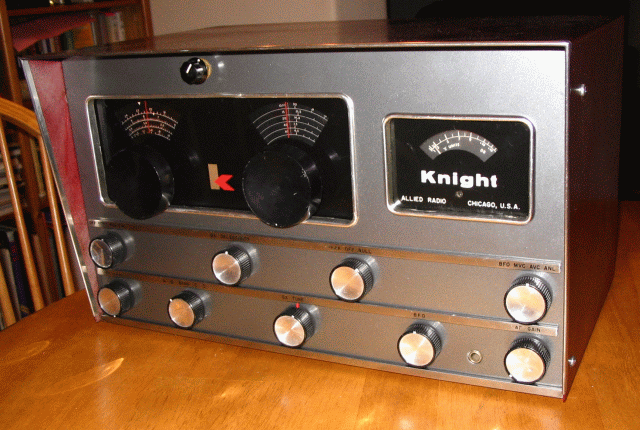
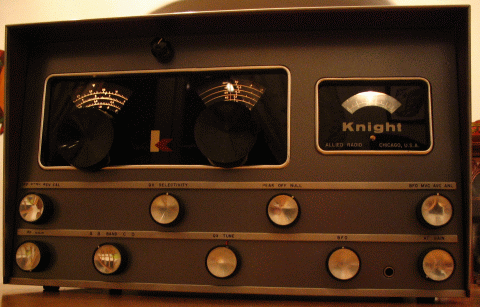
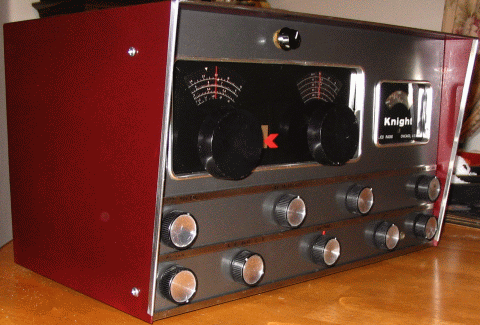
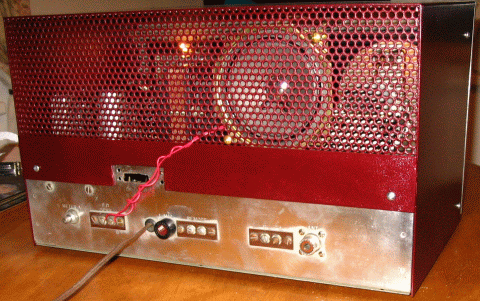
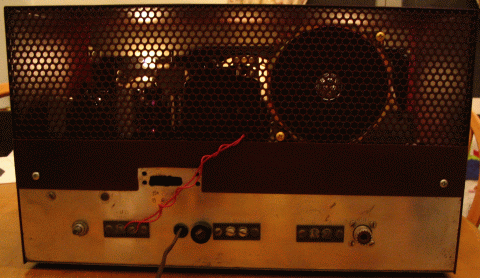
Features an S-Meter, Crystal calibrator, and four bands. Photos below show the receiver as it arrived, after unpacking.


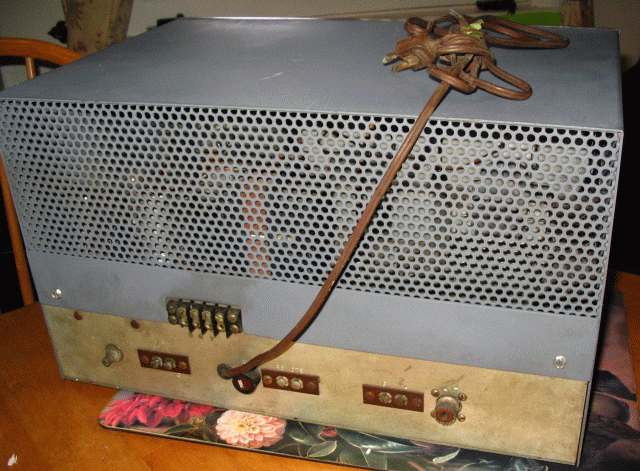
Notice custom terminal block on chassis, above mains cable grommet.

The crystal oscillator unit is the small rectangular box with one tube, a slide switch, and a 100kHz crystal, in the centre of the above photograph.
Notice what appears to be charring and evidence of burning around the wiring entering the mains transformer, just to the left of the crystal oscillator.
Restoration
Initially I powered up the radio to see if it was working. I could pull in a couple of stations, but there was a lot of crackle and noise, and the volume control didn't seem to work.
I completely dismantled the front panel, which was filthy with grime and nicotine deposits, rubbed it down to the bare metal, and repainted it in metallic grey car paint. I washed the dials and other plastic fittings from the front panel in a slightly soapy solution. The metal strips which attach to the front panel I rubbed carefully with steel wool, avoiding the lettering. After removing the bright metal trim, the case received a strong rub-down with emery paper, and then a repaint in burgundy red car spray. All the knobs were washed in soapy water with an old toothbrush, taking care not to rub too hard on the small white marker dots on each rim.
Then I blew out the chassis with compressed air, and rubbed it clean with steel wool, trying to keep as much of the debris away from the PCBs. I then removed each tube in turn, and sprayed the pins and tube socket with a de-oxidising and silicone spray. I then lightly oiled all the bearings and moving parts on the tuning capacitors and other connections, using WD40. I removed a custom terminal block on the rear of the chassis, which a previous owner had installed to, apparently, have an easy way of monitoring B+ and other voltages on the chassis. I removed all the wires connecting the block.
The front panel was re-assembled and attached to the chassis. The connection to the aerial trimmer was re-made.
At this point, I turned the receiver back on, and noticed that R27 smoked, so I quickly turned it off again. Underneath the chassis, on inspection, it became apparent that the IF circuit board had a problem: it was slightly cracked around one of the 6AZ8 sockets. A previous owner had tried to re-make some of the copper tracks, which were almost invisibly cracked in places. This hadn't been entirely successful, because checking with multimeter revealed a short in that area. Thus began a series of strange repair-resistor smoking-repair cycles, which in the end turned out to be caused by a combination of the cracked PCB and a very small piece of steel wool that had somehow made its way (been blown, probably) into the inside of one of the IF cans. This can had to be physically removed from the PCB before the problem was discovered. Once this was fixed, and some more sturdy repairs to the copper tracks made (by running new copper wire along the length of each track, spot soldering) that part of the circuit worked fine - well, at least the voltages all measured correctly according to the manual.
Next, the radio still wasn't working well. On the other hand, the Crystal Oscillator was: its output was an excellent modulated 100kHz sine wave on the 'scope. The radio seemed insensitive, and very crackly in regions of all bands. Some stations were heard on Band A, but almost nothing on the other bands. Trying out the Q Multiplier, the QX Tune variable capacitor produced some sparks between the plates as it was rotated!
The cause of the poor performance was identified on the RF board. The voltages were too low, and a burned 2.2k resistor was found after unscrewing and removing the board. Once replaced, the receiver sprang to life, and an alignment could be attempted.
Pictures of other R100/R100As
Some pictures of other R100 and R100A receivers, picked up around the Web and from Ebay auctions:
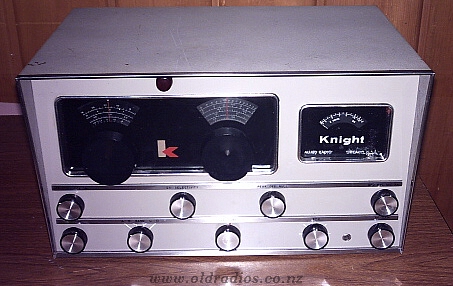
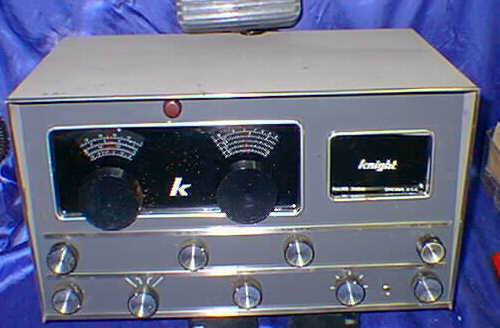
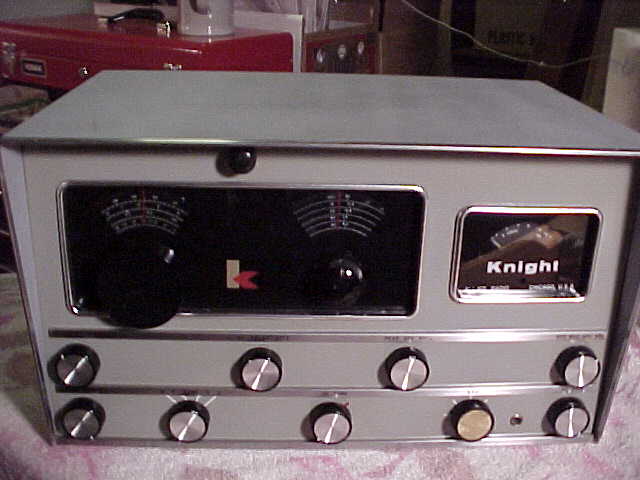
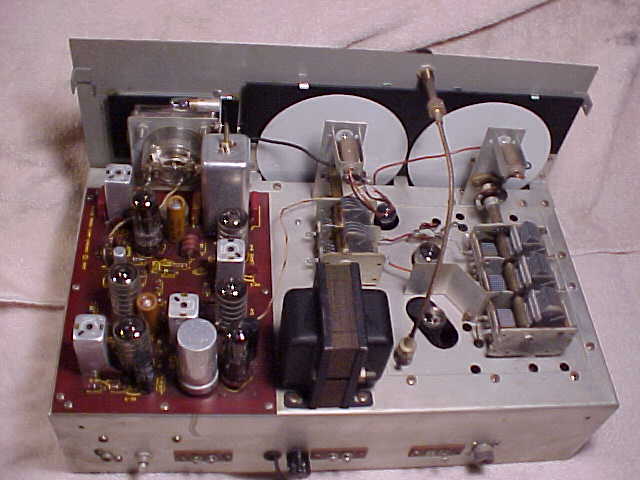
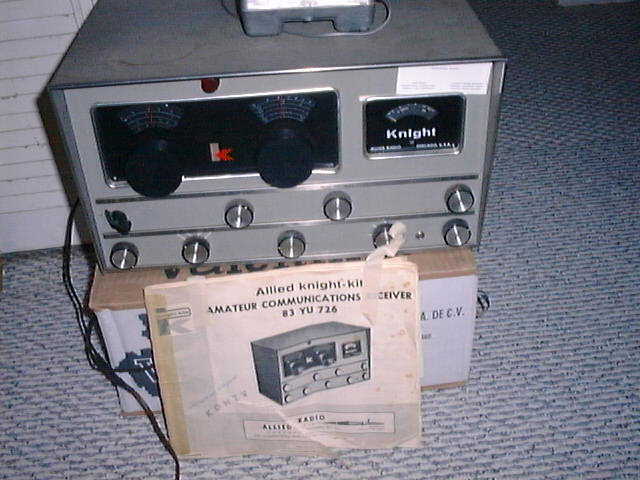
The Receiver as a kit:
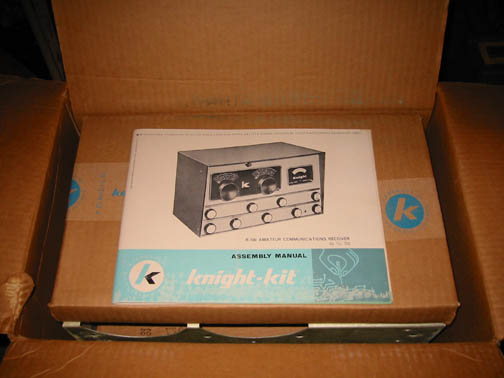
Now some R100As:
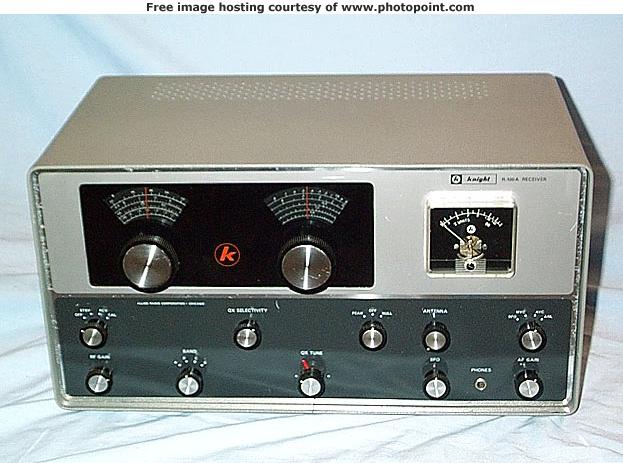


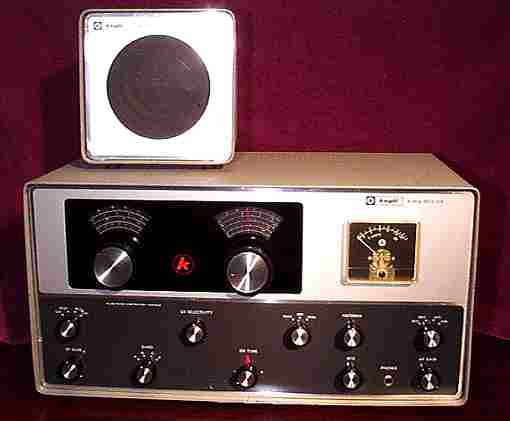
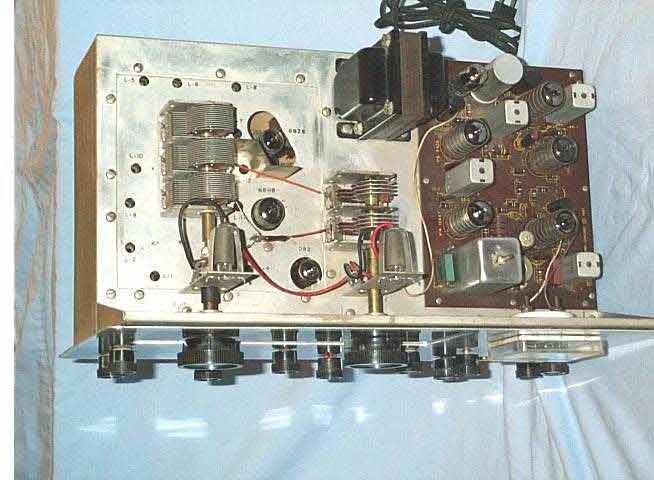
Here is the Construction Manual.
Here is the Operation Manual.
Here is the Catalogue.